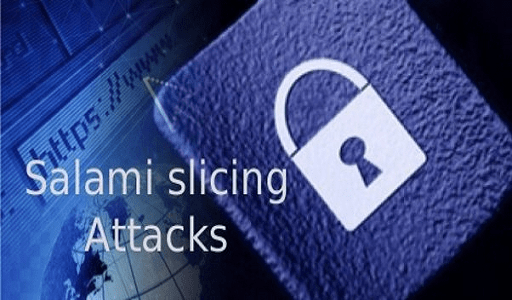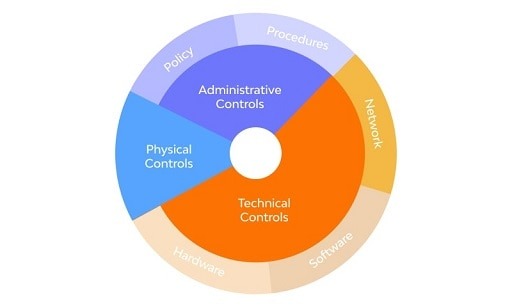An attack that uses the salami technique can be devastating to both persons and organizations. It is an underhanded means of stealing little quantities of money or data from a large number of people or businesses, with the victims frequently being unaware that they have been a victim of the theft.

What are Salami Attacks
An attack known as a salami attack is one in which the perpetrators make a series of incrementally smaller changes to a system in order to steal progressively smaller amounts of money or resources. The alterations are frequently so minute that they go unnoticed; however, when added together, they constitute a sizeable amount of change.
The name of this tactic comes from the fact that it functions similarly to slicing a salami very thinly, with each individual slice contributing a small amount to a larger whole. In the 1940s, a group of programmers from the Soviet Union stole money from the government by manipulating transactions and making off with a lot of cash. This event is considered the first time the term “salami attack” was used.
Salami slicing, which is another name for salami attacks, can also involve breaking a significant goal into smaller, more manageable pieces and working on each part separately. This strategy is also known as salami slicing. This may not only make it simpler to execute the overall strategy, but it may also make it less obvious to those around you.
These attacks, which are also known as “penny shaving,” can be challenging to identify because the modifications made are frequently unobtrusive, and the hacker may be able to conceal their actions by masquerading the attacks as a legal activity.
What are the Steps in a Salami Attack?
A user who has high-level access to a network can carry out a salami attack by installing a Trojan Horse that will round off a customer’s funds automatically while they are transacting with the network. The vast majority of customers are under the impression that the deductions are transaction fees. This occurs because malicious actors round numbers down to the lowest possible value in order to avoid being discovered.
When slicing salami, it is helpful to keep in mind two tenets:
-
Being stealthy
When slicing salami, it’s common practice to make alterations that are difficult for other people to notice or disagree with. This may involve concealing the modifications within complicated and difficult-to-understand documents or implementing the changes at a time when they are less likely to be spotted.
Sometimes financial organizations are to blame for attacks on their consumers because they try to hide shady transactions that aren’t really lawful in the small print of financial paperwork. Since you are the one who personally signed these agreements, there is not much you can do in the unlikely event that you become aware of these deductions.
-
Persistence
When slicing salami, tenacity is typically required because it can take a very long time to make enough incremental adjustments to reach the desired outcome. This may involve carrying on despite objections or resistance being presented.
In order to make the proposed changes appear more acceptable or essential, it is possible that it will be necessary to provide justifications or explanations for each of them. This may involve portraying the changes as being unimportant, trivial, or essential.
Different types of Salami Attacks
In the world of cybercrime, salami attacks of various flavors are a prevalent tactic.
Financial Salami Attacks
This is the form that is used the most frequently. In these types of attacks, the perpetrators steal inconspicuous sums of money from a large number of accounts with the goal of evading detection.
Scamming credit cards is one possible component of a financial salami operation. Installing a gadget onto a credit card terminal that reads the information from the magnetic stripe on a credit card while the card is being processed is what this entails. After the information has been obtained, it can be used to manufacture fake credit cards or to make unlawful transactions using the original card.
ATM skimming is another type of financial salami attack. This attack includes installing a device on an ATM so that it may read the information from the magnetic stripe on a bank card as the card is being placed into the machine. Following the collection of the information, it is then utilized to produce fake bank cards or to make unlawful withdrawals from the account.
Altering an employee’s payroll information, such as their bank account number and the number of direct deposits, in order to transfer a portion of the employee’s paycheck into the account of the perpetrator is an example of another sort of fraud known as payroll fraud. In the same vein, invoice fraud entails making changes to the particulars of an invoice in order to transfer money that was supposed to go to a legitimate vendor into the account of the perpetrator. Additionally, in the case of investment fraud, victims are given false or deceptive information in an effort to persuade them to invest their money in a fraudulent scheme, which ultimately results in the victims’ investment funds being stolen.
Network Salami Attacks
Malware is utilized in these assaults such that only minute portions of the bandwidth available on a target system are utilized, with the goal of evading detection.
CPU Salami Attacks
Malware is utilized in these kinds of assaults to covertly take advantage of a computer’s processing capacity in order to accomplish its goals.
Information Salami Attacks
In these kinds of assaults, the perpetrators steal or modify inconspicuous tidbits of data from a large number of accounts so that their actions go unnoticed.
How to defend yourself against a Salami Attack
There are a number of different measures you might take to defend yourself against a salami attack.
Use Unique Passwords
Use secure, unique passwords for your accounts. If you use the same password for numerous accounts, a criminal who obtains the password for one of your accounts will have a much simpler time accessing all of your accounts since they only need to remember one password. Utilizing a password manager to assist you in developing and managing secure, one-of-a-kind passwords for each of your online accounts is another smart move to make.
Activate the Two-Factor Authentication feature (2FA)
Enable two-factor authentication on all of your accounts that support it. Two-factor authentication provides an additional layer of security. When you log into an account using two-factor authentication (2FA), in addition to entering your password, you will also be required to input a code that was either emailed or texted to you. Even if a third party is able to discover your password, they will have a considerably harder time gaining access to your account because of this security measure.
Ensure your Software is updated
While antivirus software can identify and remove malware from your system, a firewall can prevent unauthorized access to your computer or network, which is an important part of computer security. It is recommended that you maintain both of these tools up to date and perform routine scans in order to assist in the protection of your system from potentially harmful applications.
Installing the most recent updates for your operating system and other software is another step you can take to bolster your defenses against vulnerabilities that can be exploited by attackers. You should also make sure that your electronic devices, such as your computer and phone, have the most recent updates and security patches installed on them.
Stay away from unknown links
Take extra precautions before downloading attachments or clicking on links on websites that lack adequate security. Be wary of e-mails that contain links or attachments that look fishy, as they could be used to deceive you into handing out important information or distributing malware. You should only open links or download attachments from websites that you know and trust.
Maintain constant vigilance over all of your accounts
Maintain consistent vigilance over your financial accounts and credit reports. Maintaining vigilance over your financial accounts and credit reports might assist you in identifying any strange activity or illegal transactions that may occur. If you discover anything that is out of the ordinary, you should contact your bank or credit card company as soon as possible.
Be wary of phishing attempts.
Phishing is a prevalent method of attack that is used to deceive victims into divulging sensitive information such as passwords or credit card details. Be wary of questionable emails or website links, and under no circumstances should you respond to unsolicited demands for personal information by providing such information.
Don’t become a victim of Salami Attacks
Attacks known as “Salami” are getting increasingly common, and cybercriminals are coming up with new methods to steal your money. By following the measures outlined above, you can defend yourself from a salami assault as well as other forms of online danger.
It would be in your best interest to remain vigilant in the face of such assaults. Take precautions to safeguard both yourself and your network by securing your online accounts and all of your personal information.
Would you like to read more about Salami Attack-related articles? If so, we invite you to take a look at our other tech topics before you leave!












